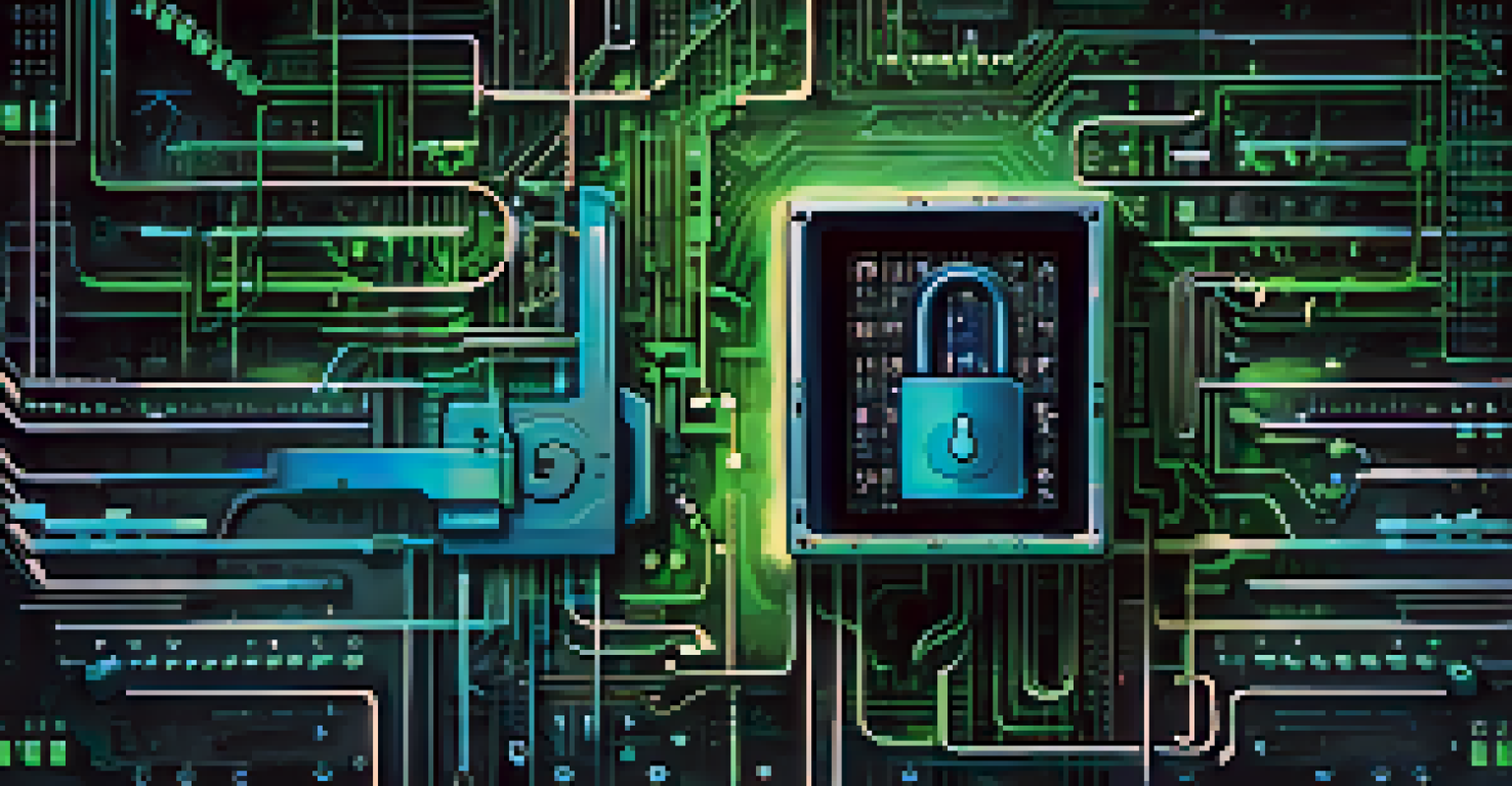Exploring Different Types of DRM Technologies Available Today

Understanding Digital Rights Management (DRM) Basics
Digital Rights Management, or DRM, refers to technologies that control how digital content is used and distributed. It helps creators protect their intellectual property, ensuring that their work is not easily pirated or misused. For instance, when you purchase an eBook, DRM prevents you from sharing it freely with others, preserving the author’s revenue.
Copyright is a legal concept that gives the creator of original work exclusive rights to its use and distribution, often for a limited time, with the intention of enabling the creator to receive compensation for their intellectual investment.
The concept of DRM can be a bit daunting, but think of it as a digital lock on your favorite content. Just as a physical lock keeps your belongings safe, DRM keeps digital works secure. This is particularly important in industries like music, movies, and software, where unauthorized access can lead to significant financial losses.
While DRM is essential for protecting creators, it can also lead to frustrations for consumers. Many users find that DRM restrictions prevent them from using content in ways they desire, such as transferring a film from one device to another. This balance between protection and user freedom is a key challenge in the ongoing discussion about DRM technologies.
Types of DRM Technologies: An Overview
There are several types of DRM technologies, each with its unique approach to protecting digital content. Some of the most common types include encryption, watermarking, and licensing systems. Each serves a different purpose and can be used in various combinations depending on the content type and distribution method.

Encryption is one of the most widely used methods, where content is encoded in a way that only authorized users can access it. Think of it as a secret language that only certain people can read. This method is commonly used in streaming services like Netflix, ensuring that only subscribers can view their content.
DRM Protects Creators' Work
Digital Rights Management (DRM) technologies safeguard creators' intellectual property from unauthorized use and piracy.
Watermarking, on the other hand, adds an invisible mark to the content that identifies its source. This is particularly useful for tracking pirated material back to its original distributor. Licensing systems further add another layer by requiring users to agree to terms before accessing the content, similar to signing a contract.
Encryption: The Backbone of Digital Security
Encryption plays a vital role in DRM technologies by transforming content into a format that is unreadable without the proper key. This ensures that only those who have legally obtained the content can access it. For example, when you download a movie from a reputable service, it is often encrypted to prevent unauthorized sharing.
Digital Rights Management is about controlling how we consume content and preserving the rights of creators in the digital age.
Consider encryption as a safe deposit box: only those with the key can unlock it. In the case of digital content, the key is usually a license or subscription. This not only protects the content but also helps maintain the integrity of the distribution system.
However, while encryption is effective, it isn't foolproof. Skilled hackers can sometimes find ways to crack these encryptions, leading to ongoing innovations in DRM technologies to stay ahead. This cat-and-mouse game between content providers and pirates continues to shape the landscape of DRM.
Watermarking: Tracking and Identifying Content
Watermarking is a clever technique used in DRM that involves embedding a unique identifier into the content. This identifier, or watermark, is often invisible to the user but can be detected by software. For instance, a movie might have a watermark that reveals who purchased it, allowing the distributor to track piracy.
Think of watermarking like a fingerprint: it’s unique to each piece of content and helps identify its source. This is particularly useful in situations where content is leaked online, as it allows creators to trace back to the original purchaser.
Balancing Protection and Access
While DRM secures content, it often frustrates consumers by limiting how they can use or share their purchased digital media.
Despite its advantages, watermarking does have limitations. If the content is heavily compressed or altered, the watermark may become distorted or lost. Nevertheless, it remains a valuable tool in the arsenal of DRM technologies, providing a way to deter piracy without overly restricting user access.
License Management: Controlling Access to Content
License management is another key component of DRM, dictating how and when users can access content. This often involves a licensing agreement that outlines the terms of use, such as the number of devices allowed or the duration of access. For instance, a software program may only be licensed for installation on a certain number of computers.
Imagine license management as a digital ticket that grants you access to an event. Just as a concert ticket specifies where you can sit and whether you can bring guests, a digital license defines how you can use the content. This helps creators maintain control over their work while providing flexibility for consumers.
However, license management can also lead to confusion and frustration for users. If a license expires or if the user forgets their login credentials, they may find themselves locked out of content they’ve paid for. Balancing the need for protection with user convenience is an ongoing challenge in the DRM landscape.
DRM in Streaming Services: A Case Study
Streaming services like Spotify and Netflix are prime examples of how DRM technologies are applied in real-world scenarios. These platforms use a combination of encryption, watermarking, and license management to protect their content while providing a seamless user experience. For instance, when you stream a movie, the content is encrypted to prevent unauthorized access.
In this scenario, think of streaming services as a library where you can access a vast collection of books. However, instead of owning the books, you’re borrowing them temporarily. The DRM technologies in place ensure that only paying members can access the content, much like a library card grants you entry to the library.
Future Trends in DRM Technology
Emerging technologies like AI and blockchain are set to enhance DRM capabilities, offering more secure and transparent content protection.
While DRM is essential for these services, it can also lead to debates over user rights. Some users feel that the restrictions imposed by DRM limit their ability to enjoy the content fully. This ongoing conversation is crucial as the industry continues to evolve and find a balance between protection and user satisfaction.
The Future of DRM Technologies: Trends to Watch
As technology continues to evolve, so too will DRM technologies. Emerging trends include the use of artificial intelligence and blockchain to enhance content protection. For example, AI can help identify potential piracy in real-time, while blockchain can create a more transparent system for tracking ownership and usage rights.
Picture the future of DRM as a smart security system for your home. Just as smart technology can alert you to intrusions, advanced DRM can proactively protect content from unauthorized access. This could lead to a more secure and user-friendly experience for consumers.

However, these advancements also raise questions about privacy and the extent of control over digital content. Striking the right balance between security and user rights will be essential as we move forward. The conversation around DRM is likely to become more complex, but it’s a necessary dialogue for the future of digital content.